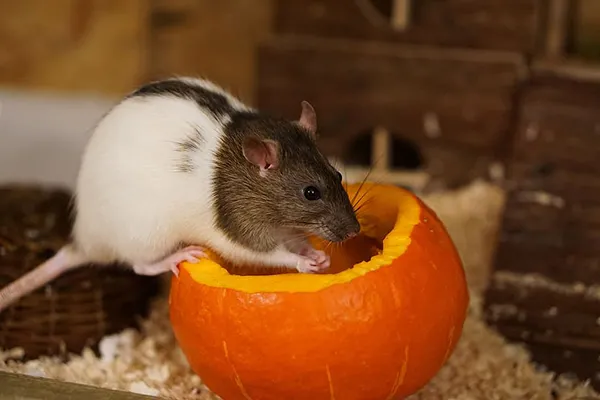A rat is one of the most common rodent types you might find near your home. However, they are often a public health concern since they can carry dangerous diseases. Read on, and find out some of the most common types you could have around your home, as well as their distinguishing features.
Common Types of Rats in Your Home
Rats are rodents with long tails. There are many types, such as the Norway rat (Rattus Norvegicus), the Genus Rattus, and much more. House rats are very common, which is why understanding the basics is essential.
You should worry if you have rats and mice at home. Scientific research has proven that they are rodents who usually invade your space to get food, and in many cases, they transmit diseases.
Unfortunately, rat infestations can infect humans – for example, they transmitted the bubonic plague. Rattus species include many types of rats, and you could have some of those at home.

All members of the Rattus species are native to tropical areas, and some authorities recognize up to five different species clusters. Here are some of the most common types you might find at home:
- Norway rat
- Ship rat
- Woodrat
- Marsh rice rat
Distinguishing Characteristics
If you want to be able to tell a black rat from a wharf rat, you need to start by identifying rats themselves and differentiate them from other rodent types. Take a look at a rat’s distinguishing features.
Eyes
In most cases, female and male rats have dark eyes. At the same time, since the eyes are positioned on each side of their head, they have a great vision field but a poor perception of depth.
Ears
Rats and mice are often known for the shape of their ears. However, a rat often has much smaller ears than other rodents, and they’re one of the few spots in their body that’s completely bald.

Nose
The nose of a rat is extremely useful for them to detect all sorts of things in the environment. It’s elongated and highly sensitive due to the VNO, a structure that’s in a cigar-shaped passage in the nasal cavity floor.
Mouth
Rats have very unique mouths that are hard to confuse with other rodents. All wild rats have a mouth with large incisors exposed, which is a product of the cleft in the upper lip. Considering that rat’s molecular biology is that of a gnawing mammal, the incisors will never going to stop growing.
Tail
Most rats have a long tail, which is why you can easily differentiate them from mice. It doesn’t matter if they’re male or female rats – their tail is extremely long compared to other rodents.
Feet
The feet of a rat are small, but they also have features that help them adapt to their environment and survive. In this case, they possess fleshy pads of different sizes depending on the species, and that helps them move faster.
Body
A rat’s body is much larger than a mouse’s, so you can easily differentiate the two just due to their size. Some rats can be around nine inches long from the tip of the nose to the base of the tail, whereas others can be as big as 19 inches long.
Norway Rat (Rattus Norvegicus) or Brown Rat
Norway rats are also known by many other different names, such as brown rats, common rats, wharf rats, street rats, Hanover rats, or Parisian rats.
It is a brown or red rat species that are often between nine inches and 11 inches long. Its weight oscillates between 140 g and 500 g, and many scientists believe it originated in China.
Even though experts believe Norway rats come from northern China, nowadays, they exist everywhere but in Antarctica, and they reside wherever human beings are (typically in urban areas).
Rat models are very convenient for scientists to make different experiments. However, brown rats have also been bred for other purposes, which is why people also have pet rats that come from that species.
The Norway rat’s name origins are not clear, since it is obvious that the species did not originate in Norway. Lastly, their fur is often dark brown or grey, whereas the bottom part of it is frequently lighter in color.

Roof Rat
Also known as the ship or the black rat, the roof rat is a small rodent. Experts believe it originated in the Indian subcontinent, but you can now find it in any part of the world.
Adult roof rats’ body length is usually between five and seven inches long, and they weigh between 75 g to 230 g. Even though they are called ‘black’ rats, their fur can be brown as well with a light underbelly.
Additionally, this type of rat is an omnivore, which means that they are small mammals that eat all types of food. Furthermore, they are considered generalists, so they don’t have specific food preferences; thus, they can eat any food meant for cows, dogs, swine, cats, and chickens.
Black rats originated in Asia, but they quickly found their way to the rest of the world in the first century AD when they arrived in Europe. After that, Europeans spread the species around, often unknowingly having them in their ships.
Unlike brown rats, black ones usually stick to warm and depopulated areas instead of urban ones. They are also extremely resistant to extreme weather, and they are much more aggressive and wild than other types of rats.

Common House Mouse
This species belongs to the order Rodentia, and it is also a small mammal. Its physical characteristics include a long, almost-bald tail, large ears, and a big snout.
It is one of the most common species you can find at home. Moreover, it is so abundant among humans. Thus, it is currently rare to find them living completely in the wild – it is much easier to come across the semi-tame populations that live near people.
House mice have been domesticated, and now humans can have them as pets. Additionally, lab mice also stem from their domestication, and they are one of the most vital model organisms used in scientific research.
Compared to the previously mentioned species, a house mouse is extremely small since its body length is between three and four inches and only weighs between 40 and 45 g.
When these types of mice are in the wild, you can find them in different colors such as grey, black, or light brown. Nonetheless, domesticated ones are unique, and people often like them because they can be white or even champagne.
All common house mice use their tail for balance. Furthermore, their tails are almost entirely bald since they act as a thermoregulation mechanism in their bodies, which is also what the hairless bits of the paws and ears do, though to a lesser extent.
An essential fact about house mice’s tail length is that it varies depending on the mouse’s postnatal development, and more essentially, its body temperature. Consequently, mice that live in cold areas often have short tails.
Rat Behavior
Rats are immensely curious creatures, and they often bite things to explore their surroundings. Unfortunately, your objects, or even sleeping babies, might be the object of their exploration, which can be extremely dangerous.
In many cases, rats may also bite if they feel threatened, which can happen when the person is near their nest. Even though a house rat is a domesticated species you may have at home as your pet, wild rats do not fit that category and often come from the sewers or similar places.
Natural history has allowed rats to have very sharp teeth and a great sense of smell, so they can quickly detect dangers and react to them if necessary. However, the perils rat attacks are not limited to their ruthless bite, because they also carry disease.
Rats are carriers of animal-borne diseases, also known as zoonoses. Thus, if a rat bites you, you might need different shots to ensure you don’t have further complications. On many occasions, one rat bite can cause rat-bite fever.
A rat can also transmit the bubonic plague through its fleas. Moreover, it could give you salmonella if their fur has the bacteria and they walk through your food.
Considering that rats can transmit so many different diseases, it is no wonder that many people want to ensure they never have them at home. Overall, it is an animal that could make you sick, so you should keep that in mind if you believe you might have an infestation.
Originally published on https://aaacwildliferemoval.com/blog/rats/characteristics-of-a-rat/




